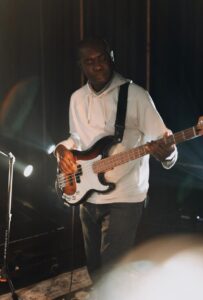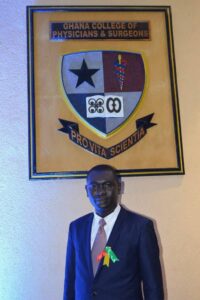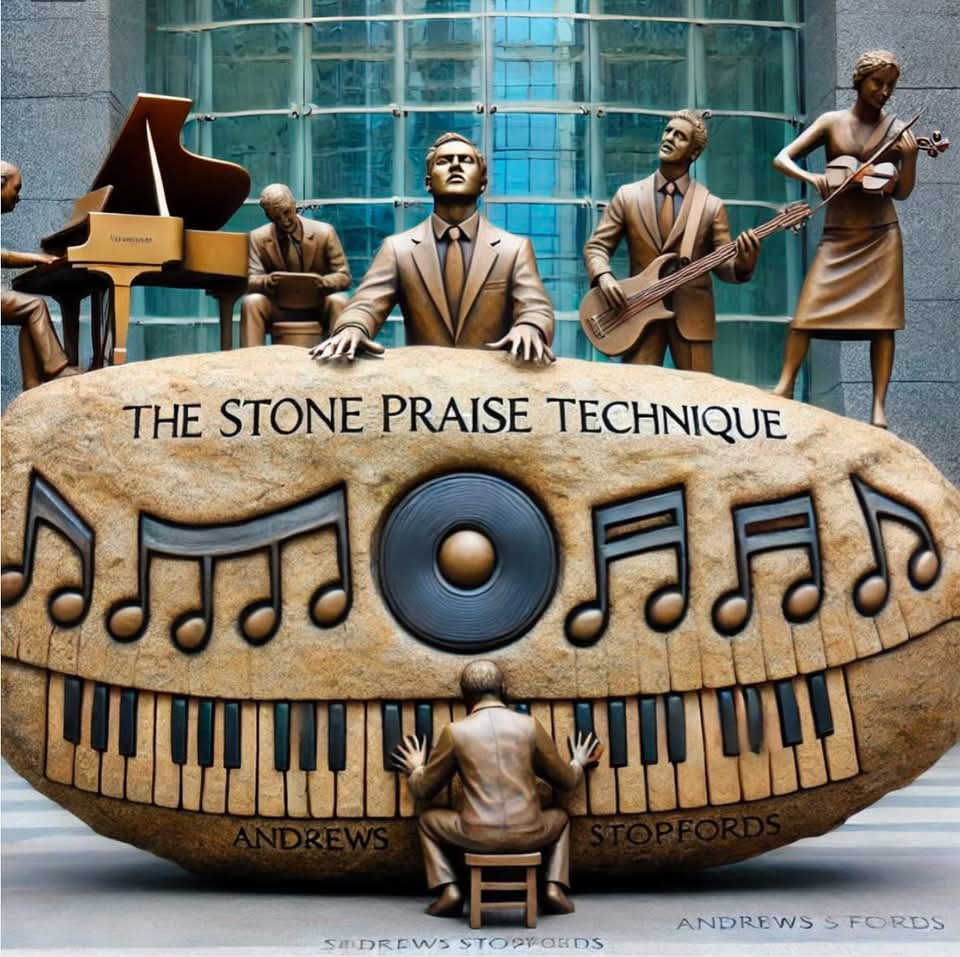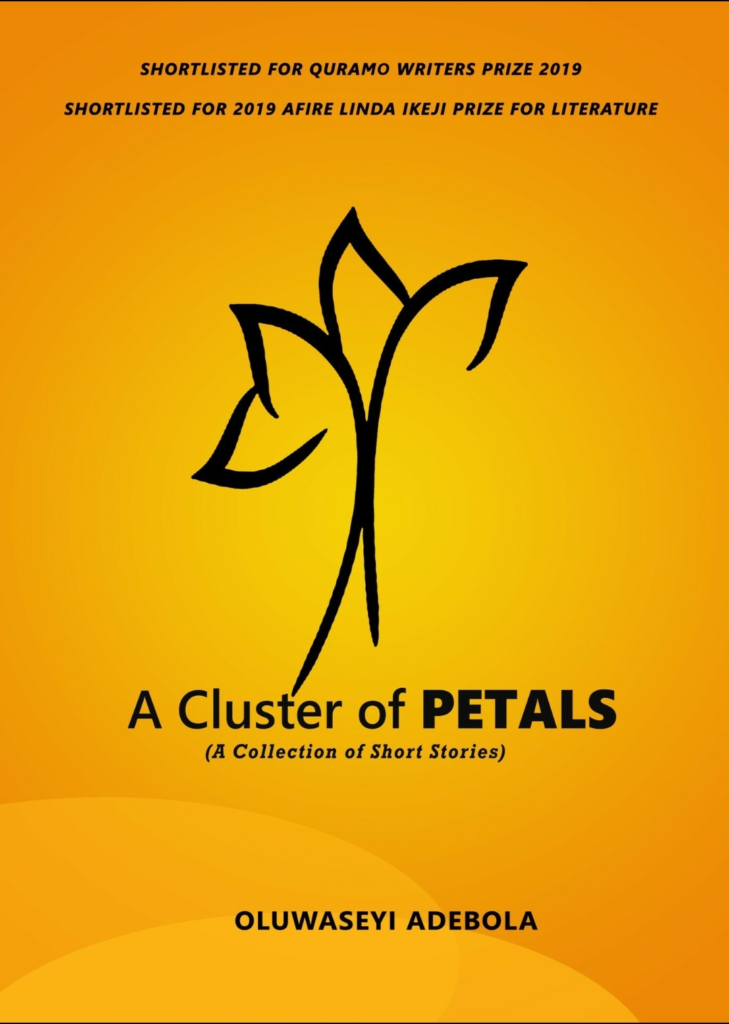CreativeNaija (CN):
Andrews Osei Asibey Stopfords, congratulations on inventing the Stone Praise Technique. What inspired you to create this innovative music approach?
Andrews: Thank you. I’ve always been fascinated by the emotional impact of music on humans. I experimented with various instrumental techniques to mimic human vocalizations, leading to the development of the Stone Praise Technique.
CN: Can you tell us a little bit about your background?
Andrews: I am originally from Hiawu Besease in Ghana. I was born in Ghana and spent most of my childhood in both Ghana and Nigeria. I lost my mom at the age of one. I was raised by my dad as a single parent. I have four siblings – two brothers, two sisters and have a large extended family who are very close-nit and supportive. We are about 40+ in number!
I started playing the piano at the age of 12 and moved on to bass at the age of 14 after watching a video of Abraham Laboriel.
I had my medical training in Nigeria, Ghana and the United States and currently work as a physician assistant in emergency medicine. I love taking care of patients- and in my practice I look after very unwell patients, many of whom are admitted unconscious.
CN:
How does the Stone Praise Technique work, and what makes it unique?
Andrews: The technique involves using musical notes on instruments like the piano, guitar, or bass to replicate human vocal sounds. Its uniqueness lies in its ability to convey emotions and messages through instrumental music, blurring the lines between speech and melody.
CN: Your research papers explore various applications of the Stone Praise Technique. Can you share some examples?
Andrews: Certainly. My research has investigated the technique’s potential in the non-pharmacological management of health conditions like ADHD, cardiovascular disease, and cerebrovascular accidents. This involves using music to describe medical conditions and treatment strategies and adherence to therapy. It also has implications for education, social bonding, and even animal-human communication.
CN:
How does the Stone Praise Technique differ from other music-based therapies?
Andrews:  Unlike other music therapies that focus on lyrics or traditional instrumentation, the Stone Praise Technique leverages instrumental mimicry of human vocalizations to evoke emotional responses.
CN: What do you hope to achieve with the Stone Praise Technique, and how do you envision its future?
Andrews: I hope to establish the Stone Praise Technique as a recognized therapeutic approach, improving lives and fostering deeper human connections. I envision its integration into various fields, from healthcare and education to music therapy and beyond.
CN:
How do you respond to sceptics who may question the scientific validity of the Stone Praise Technique?
Andrews:: I welcome scepticism, as it drives further research and refinement. My work is grounded in rigorous research, and I’ve published 22 papers on the technique. I’m confident that continued investigation will solidify the Stone Praise Technique’s efficacy.
CN:
What advice would you give to musicians, therapists, or educators interested in exploring the Stone Praise Technique?
Andrews: I encourage them to delve into my research papers, experiment with the technique, and share their experiences. Collaboration and knowledge-sharing will help refine and expand the technique’s applications.
CN: Are there any plans for workshops, training programs, or certifications for practitioners of the Stone Praise Technique?
Andrews: Yes, I’m developing a comprehensive training program for practitioners, which will include workshops, online courses, and certification processes. This will ensure that the technique is applied effectively and ethically.
CN: Finally, what message would you like to convey to our readers about the Stone Praise Technique?
Andrews: I’d like to emphasize that the Stone Praise Technique has the potential to transform lives and foster deeper connections between humans. I invite everyone to explore this innovative approach and experience its profound impact for themselves.
CN: Can you take us back to the early days of developing the Stone Praise Technique? What inspired you to start experimenting with instrumental music?
Andrews: In 2002, I began exploring the emotional impact of music on humans. I experimented with various instrumental techniques, laying the groundwork for the Stone Praise Technique.
CN:
What role did the bass guitar play in the development of the Stone Praise Technique, and how did you become interested in playing the bass?
Andrews: The bass guitar was instrumental in shaping the Stone Praise Technique. I was inspired by Abraham Laboriel, a renowned bassist. His mastery of the instrument musicality inspired me to pursue the bass guitar. His influence helped me develop a deeper understanding of music and its emotional potential. I consider him a mentor, and his legacy continues to shape my work.
CN:
Can you walk us through the timeline of developing the Stone Praise Technique on the bass guitar, piano, and guitar?
Andrews: I began experimenting with the bass guitar in 2004, developing the foundational concepts. By 2011, I had expanded the technique to the acoustic guitar, exploring its unique sonic capabilities. The piano was incorporated in 2022, allowing for further refinement and diversification of the technique.

CN:
How did the Stone Praise Technique’s early reception influence its subsequent development and recognition?
Andrews: The early reception was instrumental in shaping the technique’s trajectory. The positive feedback and interest from various fields, including music therapy and education, motivated me to continue researching and expanding the technique’s applications.
CN: Looking back on the Stone Praise Technique’s history, what do you believe is its most significant contribution to the world of music and beyond?
Andrews: I believe the Stone Praise Technique’s most significant contribution is its ability to bridge the gap between music, emotion, and communication. By providing a new language for emotional expression, the technique has the potential to transform lives, foster deeper connections, and inspire new avenues of creative exploration
CN:
Thank you so much for taking the time to have a chat with us. We wish you many more achievements and impact through this excting musical technique you have developed.
Andrews: The pleasure is mine. Thank you CreativeNaija.



